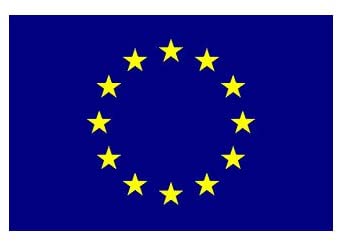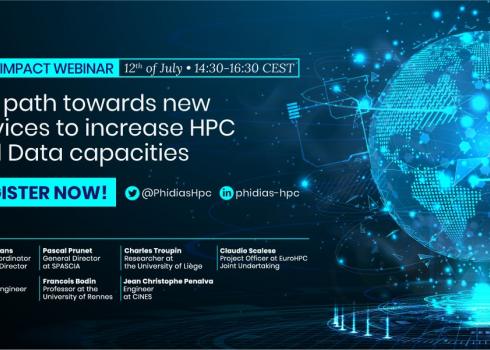On-demand high-resolution image processing for land surface monitoring
Optimal and radar images observing the Earth's land surface have become an essential source of information to address and analyse environmental issues. The diversity of Earth observation sensors makes it possible to consider these data as an unprecedented source of information, able to provide new insights into environmental monitoring. THEIA scientific expertise centres have designed and implemented prototypes of new algorithms that meet the information needs of environmental monitoring stakeholders, such as land cover, soil moisture, natural vegetation biomass and the development of the artificial task, combining VHR optical and radar sensor images.
Use Case Overview
The use case on big data earth observations: processing on demand for environmental monitoring focused on the land surface compartment. This is being led by IRD, together with the other French academic institutes INRAE and CNES (involved in the THEIA land data centre), the IT private companies Geomatys and Geolabs, coordinated by the CINES.
The objective of this use case is to provide academic and land management community users with an interactive environment to ensure systematic or on-demand production of new knowledge useful for the environmental monitoring of territories. On the one hand, it is a matter of relying on the algorithmic developments carried out withing the THEIA land data centre, machine and deep learning techniques adapted to spatial data, and on the other hand taking advantage of the complementarities (spatial and temporal resolution) of large spatial data sets from very high-resolution sensors (SPOT, PLEIADES) and SENTINEL 1 and 2-time series. With a view to the sharing and reuse of data and algorithms by the entire environmental community, the hardware and software environments deployed must allow:
- interoperable access to the catalogues of SENTINEL 1 and 2 images provided by CNES with the PEPS platform and SPOT6 images provided by the GEOSUD infrastructure managed by IRD, INRAE and IGN,
- access in an interoperable manner to the algorithms or processing chains encapsulating the algorithms,
- mass production (on a portion of European territory) or on demand of maps,
- presentation of the information produced via standardised discovery and access services in order to enable open and interoperable dissemination according to FAIR (Findable, Accessible, Interoperable, Reusable) principles.
Main results and their relevance
The design and the implementation of the WP5 technical components will be based n four main data processing chains coming from the THEIA land surface academic community:
-
Sentinel-1/Sentinel-2-derived Soil Moisture product at Plot scale (S2MP) over agricultural areas providing the academic community with essential data to parameterise hydrological or agricultural models in a context of modelling meteorological processes, water balance cycle assessment or crop development models at the plot level. It will be also targeted to the agricultural sector (irrigation monitoring),
-
Very high-resolution land use mapping (Moringa) targeted at academic and territory management communities as an input data for flux modelling of atmosphere/land surface/subsurface interfaces and the monitoring of land use/land cover changes.
-
Remote sensing images processed by artificial intelligence producing land cover mapping in super-resolution, exploring and taking advantage of the power of AI techniques.
The WP5 is structured around 3 tasks:
- Improvement and deployment of data processing chains in the HPDA/HPC environment.
- Design and implementation of user web interface dedicated to on-demand execution and analysis.
- Data transformation pipelines for semantic discovery, access to Earth Observation raw data and products.
The work plan of WP5 is built-in interaction with WP2 and linked to WP3, which should allow the prefiguring of the architecture of Research Infrastructure Data Terra. For this, a certain number of relfections and works are being carried out jointly.
The achievements will be done in two phases with the delivery of at least 24 of the optimised and deployed processing chains (D5.1.1) in the HPDA/HPC environment of the CINES. Then, in the second phase, the deployment of demonstrators providing a UI web environment for on-demand processing (D5.1.2), data workflows for discovery, access of earth observation (EO) raw data and products (D5.2) and specifications for long-term data archiving procedures (D5.3) will follow.
Facilitating selection and image analysis activities for end-users
As many recent diagnoses have shown, satellite imagery for environmental monitoring purposes is under-utilised. Whether within the scientific community or in the land and natural resource management communities, the high level of technology and the need for digital resources (storage, calculation, access) required to use satellite imagery are the main reasons for this. Because of this, the PHIDIAS project is a real opportunity for the scientific community, land managers and agriculture to take advantage of HPC architecture and big data infrastructure to facilitate selection and image analysis activities for environmental monitoring. The contribution of state of the art computing and storage capacities associated with the new collaborative and interactive environments and the implementation of open and FAIR dissemination principles will respond to the main bottlenecks identified.
The new approaches carried out in this use case should improve the production and dissemination of products useful for environmental monitoring to the scientific communities and public authorities by improving
- Capability to produce on-demand new mapping products at high temporal and spatial resolution (soil moisture, LU/LC,...),
- Provision of dedicated and interactive user environment to select, configure and execute processing chains,
- Open and FAIR diffusion of output data in a reusable manner.
To find out more about PHIDIAS use case updates, stay tuned to our regular insights and news.
www.phidias-hpc.eu I @PhidiasHpc I IN/company/phidias-hpc I info@phidias-hpc.eu






